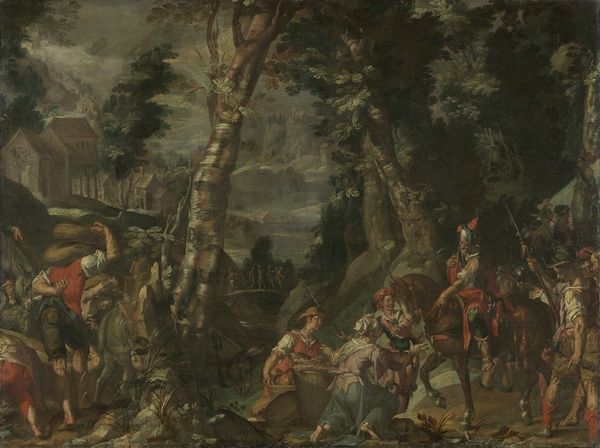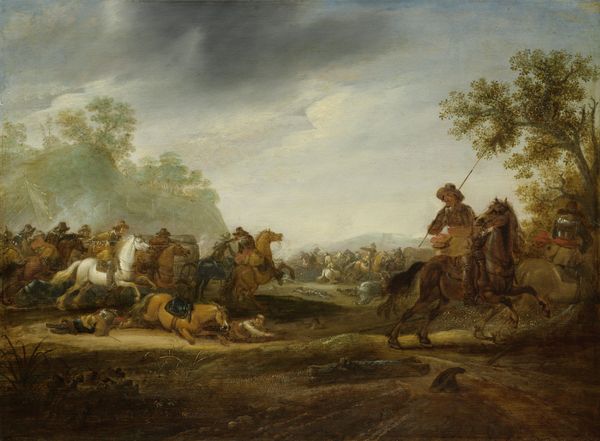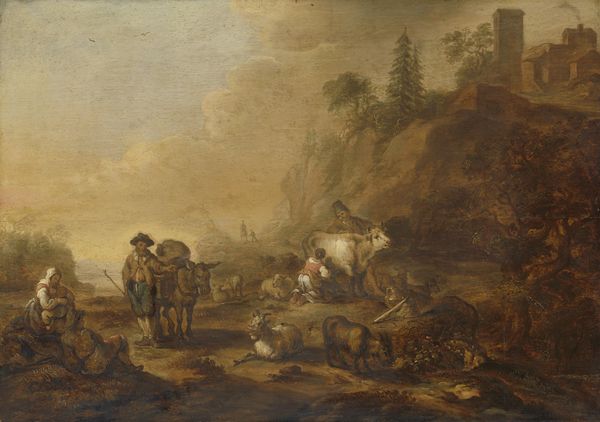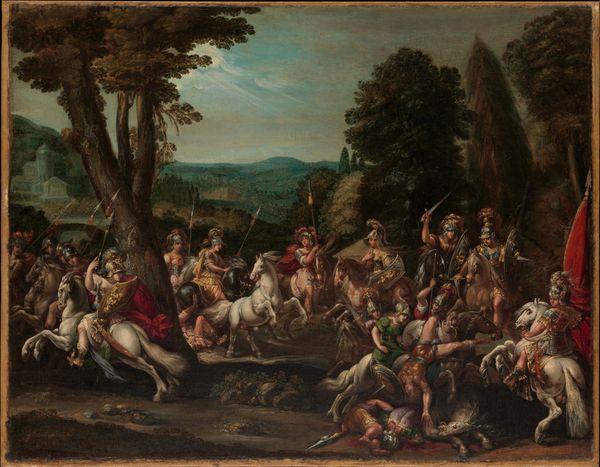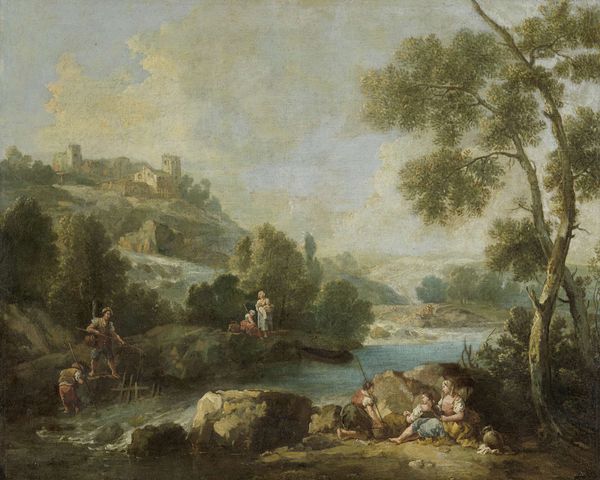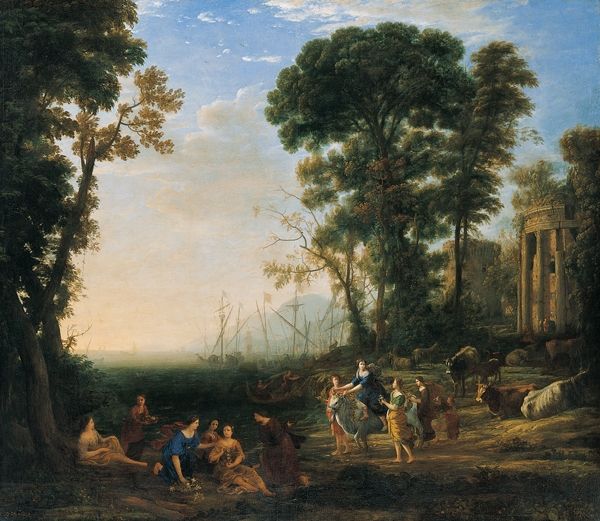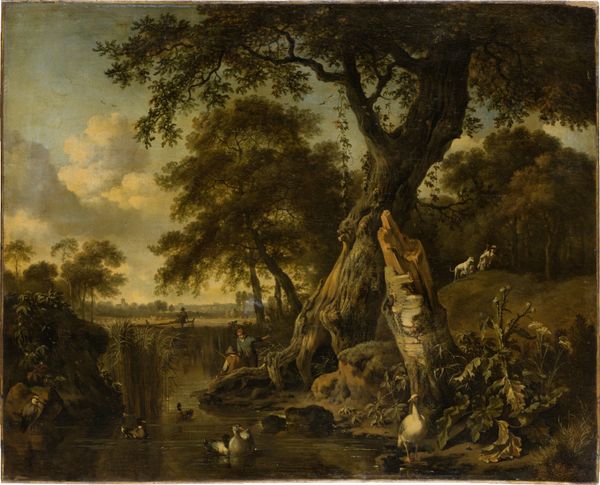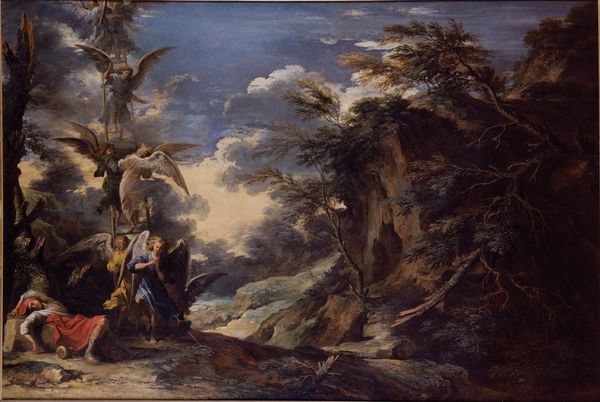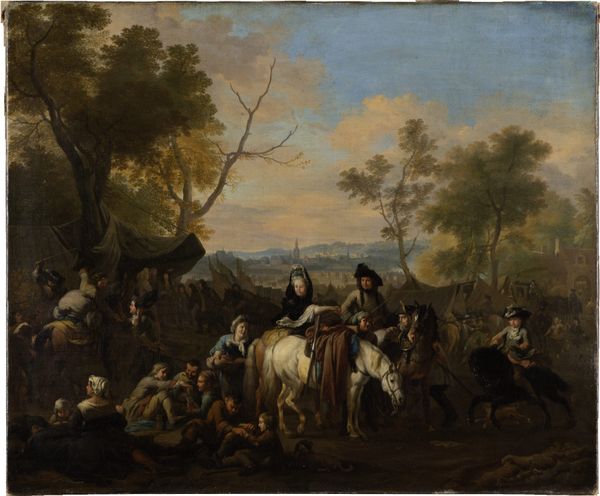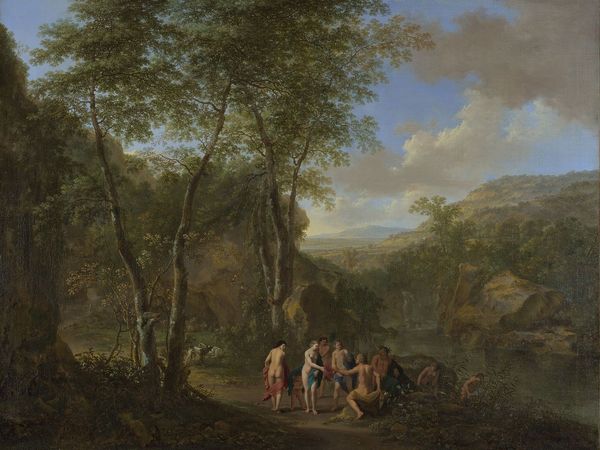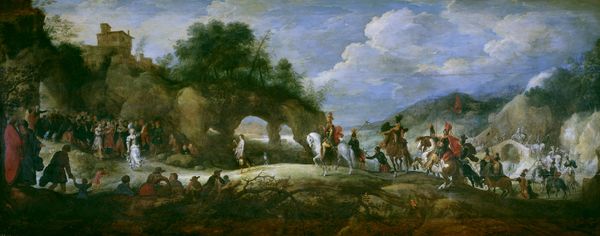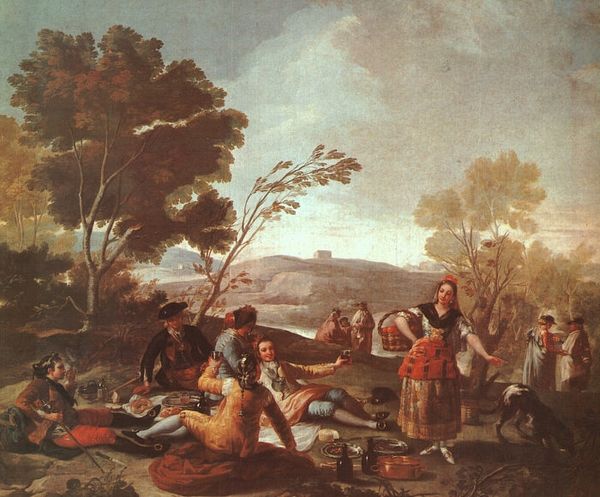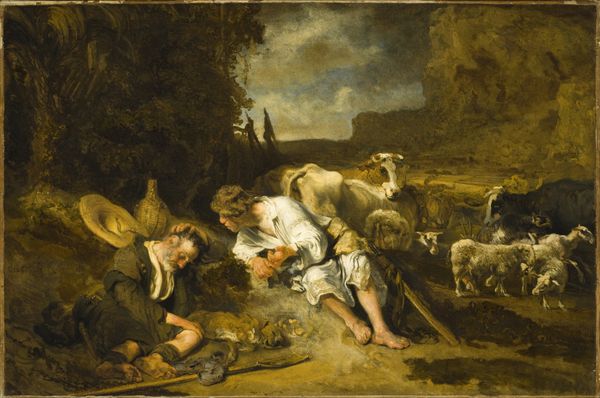
painting, oil-paint
#
baroque
#
painting
#
oil-paint
#
landscape
#
figuration
#
oil painting
#
genre-painting
#
history-painting
#
realism
Dimensions: height 50 cm, width 65.5 cm, depth 6.2 cm
Copyright: Rijks Museum: Open Domain
Editor: We're looking at Abraham van Calraet's "Cavalry Skirmish," painted sometime between 1660 and 1722. It's an oil painting, and my first impression is a swirl of chaotic action grounded by this serene landscape in the background. What draws your attention in this piece? Curator: My attention is drawn to the very visible labor embedded within this painting. The canvas preparation, the grinding of pigments, the layering of oils, even the sourcing of brushes and tools—these all point to a significant investment of labor and resources in the artistic process itself. Who was commissioning these paintings? And who were they made *for*? Editor: That's a perspective I hadn't considered. So, the value isn't just in the depiction of the battle but in the sheer effort of its creation? Curator: Precisely. Consider the material reality of warfare at the time this was created. Military campaigns impacted raw material availability and market conditions. There are also socioeconomic layers with military personnel or contractors commissioning artwork during that time, too. This piece becomes a complex commodity, reflecting not just artistic skill, but the very fabric of its historical moment. How might the choice of oil paint, a relatively new and expensive medium at the time, have played a role in its reception? Editor: I guess using a costly material like oil paint signaled wealth and prestige, both for the artist and the patron. It elevates the skirmish, turning a possibly brutal event into something refined and worthy of investment. Curator: Exactly! It asks us to think about what art meant to people who made and acquired artwork. We're looking at more than just artistic vision, we're examining a system of labor, resources, and consumption embedded in artmaking. Editor: This makes me appreciate it in a new light; it is more about the socioeconomics and history around art as a creation. Curator: It redefines our approach, yes! Thinking this way opens us up to understanding art as something that exists because a community deemed it useful to have it exist, beyond aesthetic appreciation.
Comments
No comments
Be the first to comment and join the conversation on the ultimate creative platform.
